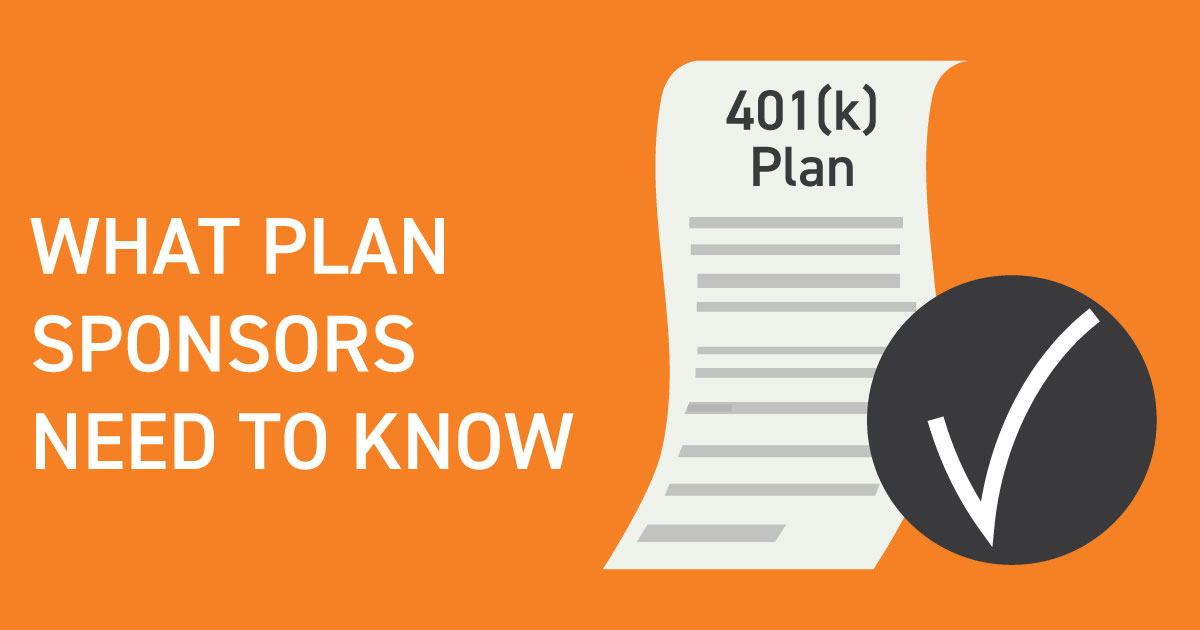Defined contribution plans, and 401(k) plans in particular, offer myriad benefits for workers and employers, and these plans can be powerful tools to help organizations attract and retain talent. Despite these benefits, only 62 percent of private sector employees have access to a defined contribution plan, according to the Bureau of Labor Statistics. This figure drops to 41 percent for companies with 50 to 99 people.
One of the reasons that companies, especially smaller ones, are hesitant to offer a 401(k) plan is that setting one up may seem like an intimidating process. There is a litany of rules to understand and comply with, as well as forms that must be filed and decisions that need to be made. Then, once the plan is established, there are additional annual requirements involved in operating the plan.
For most companies, though, plan compliance doesn’t need to be a barrier to offering a 401(k) plan to employees. Thanks to advances in technology, many 401(k) service providers are well-equipped to run the plan while you tend to your business’s needs. It’s important to remember that even if you hire a third-party administrator (TPA), you are still responsible for making sure the plan is compliant.
To help demystify the process of establishing and maintaining a 401(k) plan, we provide an overview of the steps to ensure your plan is working within the rules set by the federal government.
Establishing a Plan
Whether you hire an outside administrator or establish a 401(k) in-house, there are four basic items that need to be addressed at the start:
- Plan document: This is the 401(k) roadmap. It describes the type of plan you have established and includes details about investment, participation and vesting guidelines. The plan document also designates fiduciaries and administrators and identifies the roles they play. Participants receive an abbreviated version, which is called the Summary Plan Description.
- Trust: As a fiduciary and plan sponsor, you must act in the best interest of the plan participants. This includes setting up a trust to make sure the plan assets are held in an account that is used solely for 401(k) participants and not mixed with other company funds.
- Recordkeeping system: Sponsors need an accurate way to track the inflows and outflows of the plan’s assets. The recordkeeper is a key resource in tracking this information as well as helping prepare the annual report and other federally required documents.
- Employee statements and notices: In addition to the Summary Plan Description, other communications participants must receive account statements; disclosure statements for plan features, blackout periods, fees, expenses, investment options and performance; and the Summary Annual Report, which is a digest of the information found in Form 5500.
Operating a Plan
Once a plan has been established, there are certain responsibilities that all sponsors face while the plan is being operated. Here are some of the most important elements plan sponsors need to maintain or monitor to ensure that the plan is compliant with federal law.
- Plan contribution and compensation limits: The Internal Revenue Service (IRS) sets these limits annually. Eligible participants can contribute up to $18,500 in 2018, and participants 50 and older can make an extra $6,000 in catch-up contributions. The total amount a participant can receive on all contributions is the lesser of 100 percent of the employee’s pay or $55,000. For certain employees with compensation over an annual threshold, currently $275,000, there are caps on funding limits imposed by the IRS.
- Required Minimum Distributions (RMDs): Participants who are age 70.5 or older and are not working for the company must start receiving an annual benefit distribution from the plan. More than 5% owners and certain relatives must take an RMD regardless of employment status.
- Other distribution rules: For traditional 401(k) plans, money is deposited pre-tax, accumulates tax-free, and gets taxed when withdrawn; there may be other tax implications for early withdrawals before age 59.5. Contributions to Roth 401(k) plans are made using after-tax income, and distributions, including growth, are tax-free.
- Form 5500: This publicly available form goes to the IRS and Department of Labor each year and provides information about the plan and how it operates.
- Testing: Plans must undergo non-discrimination testing every year to make sure they benefit all employees equally, and not a specific group (such as highly compensated employees) more than another.
- Deadlines: Like the Form 5500, there are certain reporting deadlines to deliver plan information to various federal agencies. In addition, employer contributions must be completed by a certain date to be considered tax deductible. The safe harbor for small plans is 5-7 days but there is no safe harbor for most large plans. These rules are relatively subjective based on facts and circumstances.
Insight: Know Your Fiduciary Responsibilities
There are many benefits to offering a 401(k) plan. Studies have shown that companies that offer plans typically see higher levels of loyalty and productivity and lower levels of stress among employees. In addition, contributions provide tax deductions for the employer. Smaller companies can see additional tax credits in the first three years when offering a 401(k) plan.
Yet, these benefits come with many deadlines, formulas, and procedures that need to be followed. So, it’s important to do your homework and be aware of 401(k) reporting and disclosure requirements. A trusted plan professional can help oversee the process, but working with a provider doesn’t relieve you of your fiduciary duty to run the plan in the best interest of its participants. Your representative can help you through this process and explain the federal requirements in running a 401(k) plan.




